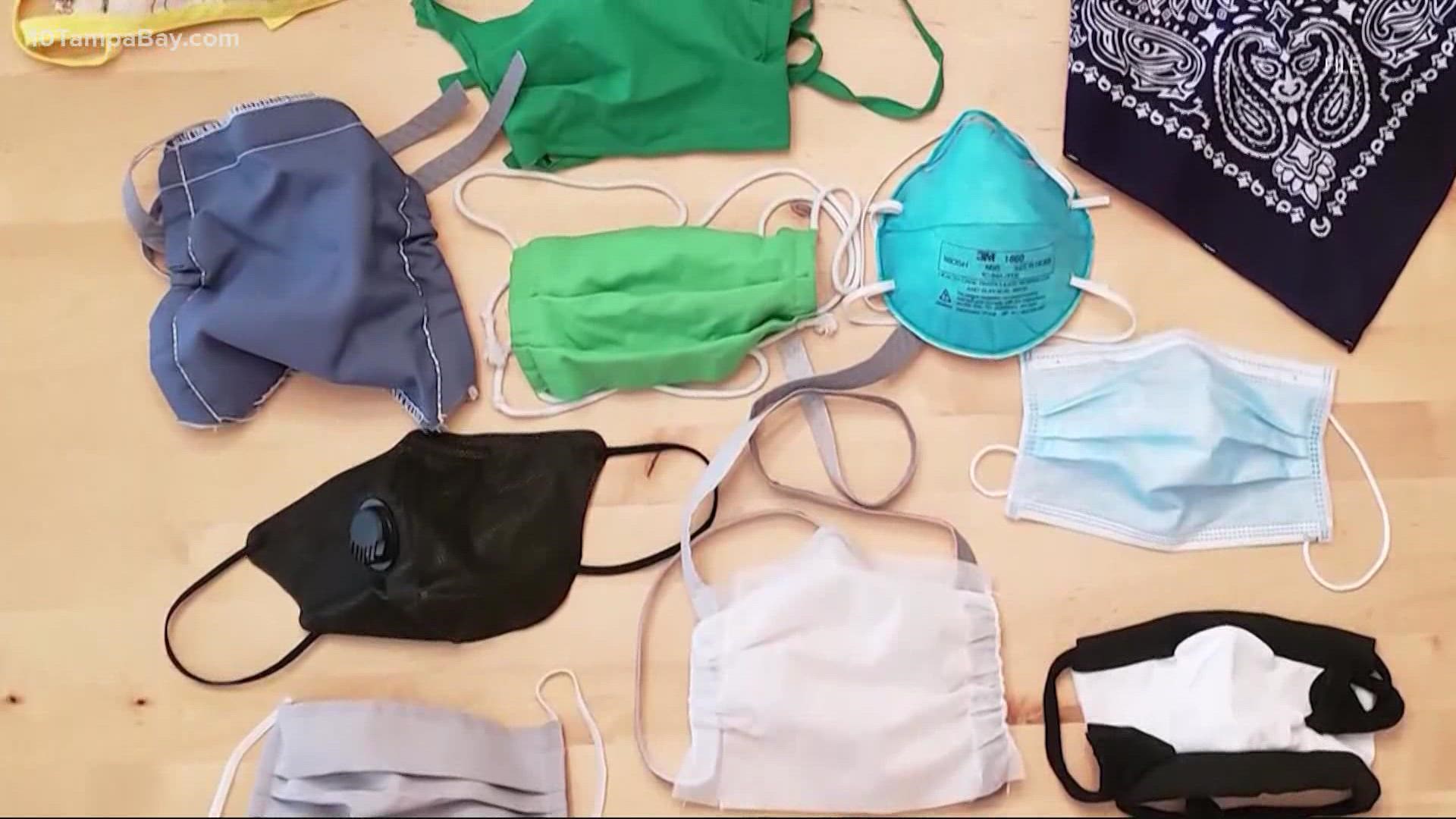TAMPA, Fla — With the contagious spread of the omicron variant, the importance of wearing masks is once again a focal point of conversation in preventing the spread of COVID-19.
But which kind? Cloth, surgical, KN-95 and N-95 are just a few of the options available.
Earlier this week, the Wall Street Journal published an article with a chart depicting how long it would take to transmit COVID-19 in various mask scenarios.
The chart, shown below, claims if neither party is wearing a mask, transmission can take place in as little as 15 minutes. If one person is wearing a cloth mask, the length of time you're protected increases to 20 minutes.


Dr. Michael Teng is a virologist with USF Health. He said the chart is not an accurate way to depict exposure risk to COVID-19.
The chart does not take into consideration vaccination or booster status, or if social distancing was implemented. Teng said these factors make a difference in determining exposure to COVID-19.
"When you don't include that in the table, it's a little simplistic and doesn't help public health messaging," Teng explained.
Teng worries the chart could discourage people from wearing a mask altogether when the difference in protection from wearing a cloth mask to no mask is just minutes.
"This is the other problem-- I don't know where the calculations came in," Teng said. "But when you look at the difference between 15 minutes and 20 minutes, people are thinking, that's not very different, why bother?"
The data used in the WSJ chart is from ACGIH’s Pandemic Response Task Force. Its results were published in the spring of 2021 before the omicron variant began to spread rapidly across the U.S.
"The overall message is the correct one," Teng said. "N-95's are actually really the best at preventing the spread of the virus. The problem is that the masks are not equal [to your total exposure risk]."
The higher quality mask you buy oftentimes leads to higher prices you have to pay.
"N-95's do cost a couple of bucks apiece," Teng said. "So that's $2 extra a day you'd have to spend."
Spending an additional few dollars a day is not affordable for everyone. Wearing a mask is better than nothing at all, regardless of what that looks like for your budget.
Teng recommends you look at COVID prevention as not just mask-wearing, but also vaccines, boosters, social distancing and hand washing.

